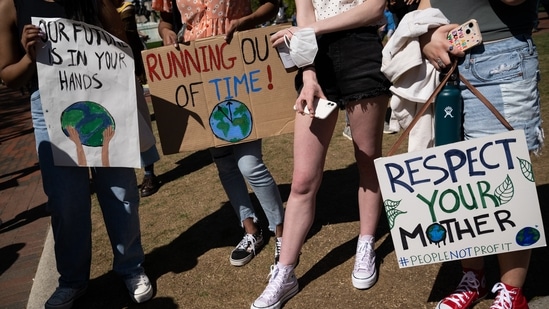Celebrating World Environment Day today isn't enough. Here’s why
Amid all the crises around the world, one of the biggest and often the most overlooked is that of climate change.
Excessive rain, excessive heat, cyclones and forest fires – these are just a few of the environmental sirens wailing at humans over the past decade – enough for all of us to take prompt initiatives, individual and at societal level, towards protecting the withering climate. However, this World Environment Day, we are here again sharing messages, celebrating it like just another special day.

Amid a truckload of crises, from the Covid-19 pandemic to a raging war between Russia and Ukraine, one of the biggest and often the most overlooked concerns is the climate crisis.
Here's a look at some of the major climate crises in India and around the world over the past year:
Record-breaking heatwaves
While India continues to struggle with its own set of never-ending heatwaves, a report by the World Meteorological Organization said global average temperature rose by around 1.11 degree Celsius in 2021, and it is still rising.
In May, the entire northwestern and central belt of India went through a horrific heatwave with temperatures soaring above 45 degrees, and even touching 50 degrees Celsius, in several areas.
The UN Intergovernmental Panel on Climate Change has signaled ‘Code Red’ saying that with human-made climate change continuing, there’s a 48 per cent chance that the globe will reach a yearly average of 1.5 degrees Celsius above pre-industrial levels of the late 1800s at least once between now and 2026.
Highest CO2 levels
Concentrations of carbon dioxide in the atmosphere in May were 50 percent higher than during the pre-industrial era, reaching levels not seen on Earth for about four million years, the US's National Oceanic and Atmospheric Administration (NOAA) said in its latest report.
Reasons behind this included the increased production of electricity using fossil fuels, transport, the production of cement, and deforestation, apart from the heightened forest fires and even volcanic eruptions to an extent.
Cyclones and floods
In the past one year, India recorded at least four cyclones – Yaas, Tauktae, Asani and Gulab – displacing millions of people along the coastlines. Cyclone Yaas that took form in the Bay of Bengal alone made more than 2.2 million people homeless, primarily in Odisha and West Bengal.
This was just a year after the super cyclonic storm Amphan, with winds over 120kmph, caused devastation in Odisha and West Bengal, piercing its way through the Sundarbans and wreaking havoc even in Bengal's capital city Kolkata.
In the United States, Hurricane Ida struck Louisiana in August last year, its 240km-per-hour winds matched the strongest landfall on record for the state, the WMO said. It caused an estimated $75 billion and is said to have led to 115 deaths in the US and Venezuela.
Apart from cyclonic formations floods due to cloudbursts and sudden rainfall have also been on a rise, causing waterlogging in cities around the world, the latest being Miami.
Rising water levels, soil erosion
According to the report by the Centre for Science and Environment (CSE), 25 glacial lakes and water bodies in India, China and Nepal have recorded over 40 per cent rise in their water spread areas since 2009, posing a direct threat to seven states and union territories – Assam, Arunachal Pradesh, Sikkim, Bihar, Himachal Pradesh, Jammu and Kashmir, and Ladakh.
Further, it said that an increase in the frequency of cyclones and rise in the sea level, along with anthropogenic activities such as the construction of harbours, beach mining and building of dams are some of the reasons for coastal erosion.
The amount of garbage in the hills and near water bodies only add to that.
These are just a few of the countless human-made causes behind climate change. As a result, it is pertinent to adopt sustainable patterns of consumption and production, starting with small changes in individual behaviour, to resolve the environmental crisis and reform the narrative around climate.






